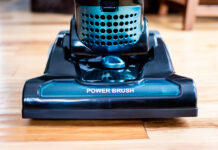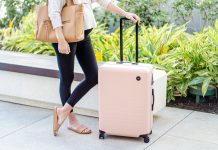One of the most common reasons people upgrade to a DSLR is because they want to capture their high speed children with a faster shutter speed than their smartphone or point and shoot camera is capable of. However, simply owning a DSLR does not make for a better photo unless you know how to use it.
In one of our most recent tutorials, we talked at length about aperture basics. We told you then that once you understand the power of aperture and how to utilize it, everything else will fall into place. Truth be told, “everything” won’t actually fall into place until you understand a few more things, one of which is shutter speed. Shutter speed is the second of 3 basic light control functions of your camera that we will discuss over the next few weeks.
Aperture, SHUTTER SPEED and ISO work together to adjust how much light hits your DSLR’s sensor, and how that light is recorded to make a photograph. Today’s lesson will explain the basics of shutter speed and challenge you to experiment with your camera in Shutter Priority Mode.
What is Shutter Speed?
Shutter speed controls the amount of time that your camera’s digital sensor (what used to be film) is exposed to light. It can range from several seconds (or minutes on the Bulb setting) to 1/1600 of a second or faster. Think of the “shutter” like a small plastic door that opens and closes to allow light onto the sensor or prevents light from reaching the sensor. With that in mind, the shutter “speed” is the actual speed in which that small plastic door stays open. The shutter is opened when you press the shutter release button on your camera to take a picture. The sensor in your camera captures everything that happens when the shutter is open.
Let’s review that one more time.
- When you press the shutter release button your camera, it opens and closes your shutter for a predetermined amount of time.
- How long your shutter remains open is called shutter speed.
- Shutter speed is measured in seconds or fractions of a seconds.
- The longer your shutter is open, the more light is allowed into your camera.
- The faster your shutter speed, the less light is allowed into your camera.
- Shutter speed is responsible for recording motion.
The amount of light that enters your camera will also determine your exposure. If too much light enters your camera’s digital sensor, your image will be over-exposed. On the other hand, if not enough light reaches your camera’s sensor, your image will be under-exposed. Between aperture and shutter speed, you determine how much light you want to hit your sensor.
Freezing Motion
Faster shutter speeds freeze action. This comes in handy if you are at your child’s ballgame and want to capture your son or daughter swinging the bat or catching the winning ball. It also comes in handy when you’re chasing toddlers around on the playground, or you’re trying to capture a fun jumping shot. A fast shutter speed paired with continuous shooting mode increases your chances of capturing the perfect smile. While you’re children are young, it’s best to keep your shutter speed at 1/200 or higher to avoid blurry photos.

Motion Blur
Slower shutter speeds are used to show motion in an image and can be used to create motion blur (often referred to as camera shake if it’s unintentional). When the shutter is open for a longer amount of time, it captures any motion that occurs while it is open. This comes in handy if you want to capture a spinning Ferris Wheel or cars in motion. It can also come in handy if you’re trying to photograph a subject at night. If you’re planning to capture motion (or photograph at night), we recommend using a tripod.

When setting the shutter speed on your DSLR, you will likely see numbers such as 60, 400, 1600, 4000, etc. You may even see 1/60, 1/400, etc. Either way, these represent fractions of a second and the higher the fraction, the faster the shutter speed and the less blur you can expect from your moving target. Alternatively, if you see a number such as 2″5, this means that your camera’s shutter speed is set to 2 and a half seconds. In this case, the higher the number, the longer your shutter will remain open and the more blur you can expect.
Bulb Setting
You may also have a setting called “bulb” on your camera. In this mode, your shutter stays open from the time you press the shutter button until it is pressed again. Bulb mode is great for capturing fireworks, and it is best to use a tripod and remote for this setting.
Practice!
Are you ready to “play with your new ideas?”
Since our last tutorial, you’ve probably been operating out of Aperture Priority Mode (or AV mode). Now, we want you to operate your camera in Shutter Priority Mode (indicated with a “S” or TV” on your camera’s mode dial).

- Once you have that set, find a sink near a window (it can be the kitchen sink or a bathroom sink). You can alternatively find a stream or waterfall, but we’re under the impression that you are practicing while you’re kids are taking a nap, so we’re trying to keep it simple.
- Then, bump up your ISO to at least 800 (or, you can let your camera set ISO for you as we did).
- Place an object in the sink that will obstruct the water flowing from the faucet. You want something that will cause the water to splash a bit. We turned a vase upside down.
- Set your shutter speed to 1/80th of a second (indicated by the number 80.) Turn on the water and take your first shot.

- Adjust your shutter speed to 1/1600 and take a second shot.
- Finally, adjust your shutter speed to 1/4000 and take a third shot.
Kinda cool, right? Try taking your experiment (and your kids) outside now. Try a faster shutter speed to freeze time. Have your kids make a splash in the pool or jump on a trampoline. Attempt to capture motion blur by setting up your tripod and having your kids ride their bikes in front of the camera. It takes practice, but experimenting with shutter speed is fun.
Shutter speed is a blast to experiment with!
The key to developing a better understanding of photography and shutter speed is practice. So, get out there and take some shots. Try long exposures, short exposures, moving objects and night photography. Then upload your photos to your computer and analyze your work. Are your photos blurry? Are they sharp? Did you capture motion? Did you freeze action? The more you can ask yourself those questions, the better your understanding of shutter speed. Of course, you can also ask us. Don’t hesitate to ask questions the comment section if you need a little help.
For more lessons on getting to know your camera, check out our post on Aperture Basics.
Photo Credit: Ashley Sisk









































